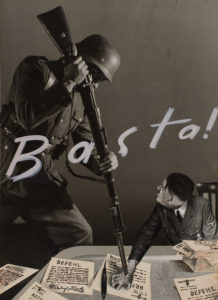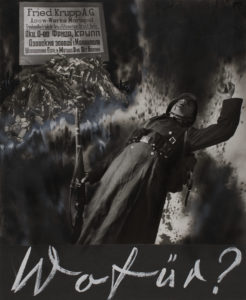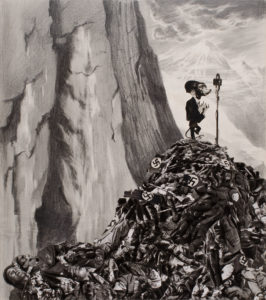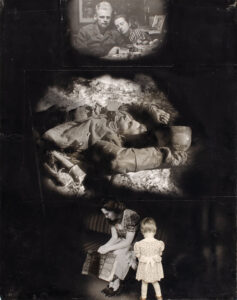Alexander Zhitomirsky
Russian, 1907—1993
About
Alexander Zhitomirsky
Russian, 1907—1993
Alexander Zhitomirsky was the leading Russian artist of political photomontage from 1941 through the mid-1970s, and established a completely new aspect of photomontage, with a clearer function than John Heartfield’s and Mieczslaw Berman’s work. Zhitomirsky’s are partisan in character, and all his works deal with mankind’s foremost concern—the struggle for peace, for disarmament.
During World War II his anti-Nazi propaganda leaflets, which were printed in editions of up to one million, reached vast numbers of German soldiers. In the beginning of the war, Alexander Zhitomirsky was forced to work in secret. Not until the war turned in Russia’s favor could Zhitomirsky take credit for being the artist behind the propaganda campaign. His work was so effective at demoralizing enemy soldiers that German Minister of Propaganda, Josef Goebbels, included Zhitomirsky on the Third Reich’s “most wanted” enemy list. Zhitomirsky’s work earned him the title of National Artist of the Russian Federation at the height of his career, an honor, which for Russians, is as prestigious as the Nobel Prize. His predecessors during the 1920s and 30s in photomontage, Rodchenko, Gustav Klucis, and El Lissitzky, are well known in the West. From 1941 through the mid-1970s, although he was recognized in Russia as one of the foremost political artists, and also exhibited in Europe, Zhitomirsky’s work was virtually unknown in the United States. The Robert Koch Gallery presented the first United States exhibition and catalog featuring Zhitmorsky’s original collages in 1994. Alexander Zhitomirsky’s work is included in “Faking It: Manipulated Photography Before Photoshop” at the Metropolitan Museum of Art, October 2012–January 2013, an exhibition traveling to the National Gallery of Art in Washington, and the Museum of Fine Arts, Houston.



